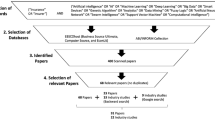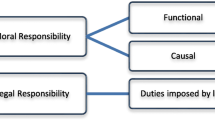Abstract
The China Risk-Oriented Solvency System (C-ROSS), the new risk-oriented regulatory framework for the Chinese insurance industry, was fully implemented at the beginning of 2016. In this paper, we identify the main features of the C-ROSS and compare its rules and standards with those of the Risk-Based Capital (RBC) system in the United States, the Solvency II system in the European Union, and the Swiss Solvency Test (SST) in Switzerland. Using a conceptual framework proposed by Cummins et al. (J Insur Regul 11:427–447, 1994) and Holzmuller (Geneva Pap Risk Insur 34:56–77, 2009), we analyse C-ROSS according to 11 criteria and find that the system scores are substantially better than those of RBC, and more or less as good as those of the Solvency II or SST systems. We also contrast the strengths and weaknesses of C-ROSS with those of the RBC, Solvency II and SST systems. Our analyses are of value to regulators developing risk-based supervisory frameworks, and to insurers engaging in business in any of the four geographic regions considered.

This figure summarises the CIRC’s insurance company solvency regulatory rules6 and categorises these rules under the three-pillar framework.
Similar content being viewed by others
Notes
CIRC (2015a).
Swiss Re (2015b).
UBS (2016).
CIRC (2012).
CIRC (2013).
CIRC (2015b).
Oliver Wyman (2014).
Ernst and Young (2015).
PricewaterhouseCoopers (2015).
Swiss Re (2015a).
Milliman (2015).
Holzmuller (2009).
See Chen et al. (2013) for a systematic overview of the previous factor-based solvency system in China.
IAIS (2011).
Cummins et al. (1995).
Cummins et al. (1994).
Doff (2008).
Feldblum (1996).
Merrill et al. (2012).
Bank of England (2014).
Segal (2013).
van Rossum (2005).
PricewaterhouseCoopers (2010).
Association of British Insurers (2015).
Nebel (2004).
CIRC (2014).
CIRC (2015c).
The website address is http://icid.iachina.cn.
Eling et al. (2007).
NAIC (2010).
EC (2009).
Swiss Federal Office of Private Insurance (2006).
E.g. The Financial Services Agency (FSA) in Japan introduced the Solvency Margin Standard in 1996; The Swiss Financial Market Supervisory Authority (FINMA) in Switzerland implemented the SST in 2006; The Office of the Superintendent of Financial Institutions (OSFI) in Canada revised its minimum continuing capital and surplus requirements in 2015; The European Union (EU) began implementation of Solvency II in 2016; The National Association of Insurance Commissioners (NAIC) in the United States is reviewing the Solvency Modernisation Initiative at the time of writing.
References
Association of British Insurers (2015) ‘Two weeks to go: UK insurers ready for new Solvency II capital rules’, from https://www.abi.org.uk/News/News-releases/2015/12/Two-weeks-to-go-UK-insurers-ready-for-new-Solvency-II-capital-rules, accessed 28 Sep 2016.
Bank of England (2014) ‘Procyclicality and structural trends in investment allocation by insurance companies and pension funds: a discussion paper by the Bank of England and the procyclicality working group’, from http://www.bankofengland.co.uk/publications/Documents/news/2014/dp310714.pdf, accessed 7 June 2016.
Chen, B., Tennyson, S., Wang, M. and Zhou, H. (2013) ‘The development and regulation of China insurance market: History and perspectives’, Risk Management and Insurance Review 17(2): 241–263.
China Insurance Regulatory Commission (the CIRC) (2012) ‘Press release (in Chinese only)’, from http://www.circ.gov.cn/web/site0/tab5207/info199586.htm, accessed 7 June 2016.
China Insurance Regulatory Commission (Z) (2013) ‘Conceptual framework of C-ROSS (in Chinese only)’, from http://www.circ.gov.cn/Portals/0/Containers/2012confnews/中国第二代偿付能力监管制度体系整体框架.docx, accessed 7 June 2016.
China Insurance Regulatory Commission (CIRC) (2014) ‘Requirements on appointment of directors and senior management of insurers’ (in Chinese only)’, from http://www.circ.gov.cn/web/site0/tab5176/info3903964.htm, accessed 7 June 2016.
China Insurance Regulatory Commission (CIRC) (2015a) ‘2014 annual insurance statistics’ (in Chinese only)’, from http://www.circ.gov.cn/web/site0/tab5257/info3948914.htm, accessed 7 June 2016.
China Insurance Regulatory Commission (CIRC) (2015b) ‘Solvency regulatory rules of C-ROSS (in Chinese only)’, from http://www.circ.gov.cn/web/site0/tab5225/info3951923.htm, accessed 7 June 2016.
China Insurance Regulatory Commission (CIRC) (2015c) ‘Continuing professional development requirements for directors and senior officers of insurers (in Chinese only)’, from http://www.circ.gov.cn/web/site0/tab5168/info3956238.htm, accessed 7 June 2016.
Cummins, J. D., Harrington, S. and Klein, R. (1995) ‘Insolvency experience, risk-based capital, and prompt corrective action in property-liability insurance’, Journal of Banking & Finance 198(3–4): 511–527.
Cummins, J. D., Harrington, S. and Niehaus, G. (1994) ‘An economic overview of risk-based capital requirements for the property-liability insurance industry’, Journal of Insurance Regulation 11: 427–447.
Doff, R. (2008) ‘A critical analysis of the Solvency II proposal’, The Geneva Papers on Risk and Insurance—Issues and Practice 33: 193–206.
Eling, M. and Holzmuller, I. (2008) ‘An overview and comparison of risk-based capital standards’, Journal of Insurance Regulation 26(4): 31–60.
Eling, M., Schmeiser, H. and Schmit, J. T. (2007) ‘The Solvency II process: Overview and critical analysis’, Risk Management and Insurance Review 10: 69–85.
Ernst and Young (2015) ‘Risk-based capital and governance in Asia-Pacific: Emerging regulations’, from http://www.ey.com/Publication/vwLUAssets/EY_Risk_based_capital_and_governance_in_Asia-Pacific_ebook/$FILE/EY_APAC_0306151%20(2).pdf, accessed 7 June 2016.
European Commission (EC) (2009) ‘Directive 2009/138/EC of the European Parliament and of the Council of 25 November 2009 on the taking-up and pursuit of the business of insurance and reinsurance (Solvency II)’, from http://eur-lex.europa.eu/legal-content/EN/ALL/?uri=CELEX:32009L0138, accessed 7 June 2016.
Feldblum, S. (1996) ‘NAIC property/casualty insurance company risk-based capital requirements’, Proceedings of the Casualty Actuarial Society 83: 297–418.
Holzmuller, I. (2009) ‘The United States RBC standards, Solvency II and the Swiss Solvency Test: A comparative assessment’, The Geneva Papers on Risk and Insurance—Issues and Practice 34: 56–77.
International Association of Insurance Supervisors (IAIS) (2011) ‘Insurance core principles, standards, guidance and assessment methodology’, from http://www.iaisweb.org/modules/icp/assets/files/Insurance_Core_Principles_Standards_Guidance_and_Assessment_Methodology_October_2011_revised_October_2013_pdf, accessed 7 June 2016.
Merrill, C. B., Nadauld, T. D., Stulz, R. M. and Sherlund, S. (2012) ‘Did capital requirements and fair value accounting spark fire sales in distressed mortgage-backed securities?’ working paper, National Bureau of Economic Research.
Milliman, Inc. (2015) ‘Analysis of China’s new C-ROSS solvency capital regime’, from http://www.milliman.com/uploadedFiles/insight/2015/analysis-china-c-ross.pdf, accessed 7 June 2016.
National Association of Insurance Commissioners (NAIC) (2010) ‘Standard valuation law’, from http://www.naic.org/store/free/MDL-820.pdf, accessed 7 June 2016.
Nebel, R. (2004) ‘Regulations as a source of systemic risk: The need for economic impact analysis’, The Geneva Papers on Risk and Insurance—Issues and Practice 29: 273–283.
Oliver Wyman (2014) ‘C-ROSS: Preparing for Solvency II with Chinese characteristics’, from http://www.oliverwyman.com/content/dam/oliver-wyman/global/en/files/insights/financial-services/2014/July/C-ROSS_Preparing%20For%20Solvency%20II%20With%20Chinese%20Characteristics.pdf, accessed 7 June 2016.
PricewaterhouseCoopers (2010) ‘Getting set for Solvency II’, from http://www.pwc.co.uk/industries/financial-services/regulation/solvency-ii/getting-set-for-solvency-ii.html, accessed 28 Sep 2016.
PricewaterhouseCoopers (2015) ‘PwC’s interpretations on the solvency regulatory rules of C-ROSS (in Chinese only)’, from http://www.pwccn.com/webmedia/doc/635618579158327672_insurance_compensation_mar2015_chi.pdf, accessed 7 June 2016.
Segal, S. (2013) ‘How model risk devastated an organization’, The Actuary Magazine 10(3): 22–27.
Swiss Federal Office of Private Insurance (2006) ‘Technical document on the Swiss Solvency Test’, from https://www.finma.ch/FinmaArchiv/bpv/download/e/SST_techDok_061002_E_wo_Li_20070118.pdf, accessed 7 June 2016.
Swiss Re (2015a) ‘Risk Dialogue Magazine (No. 21) Special edition on C-ROSS—the new risk based solvency regulatory system in China (in Chinese only)’, from http://media.cgd.swissre.com/documents/CGD_RDM_CROSS_CHN_WEB.pdf, accessed 7 June 2016.
Swiss Re (2015b) ‘World insurance in 2014: Back to life’, from http://www.swissre.com/sigma/?year=2015#anchor0, accessed 7 June 2016.
UBS (2016) ‘Report on performance of listed insurers 2015 (in Chinese only)’, Discussion paper.
Van Rossum, A. (2005) ‘Regulation and insurance economics’, The Geneva Papers on Risk and Insurance—Issues and Practice 30: 43–46.
Author information
Authors and Affiliations
Corresponding author
Rights and permissions
About this article
Cite this article
Fung, D.W.H., Jou, D., Shao, A.J. et al. The China Risk-Oriented Solvency System: A Comparative Assessment with Other Risk-Based Supervisory Frameworks. Geneva Pap Risk Insur Issues Pract 43, 16–36 (2018). https://doi.org/10.1057/s41288-017-0046-3
Received:
Accepted:
Published:
Issue Date:
DOI: https://doi.org/10.1057/s41288-017-0046-3




